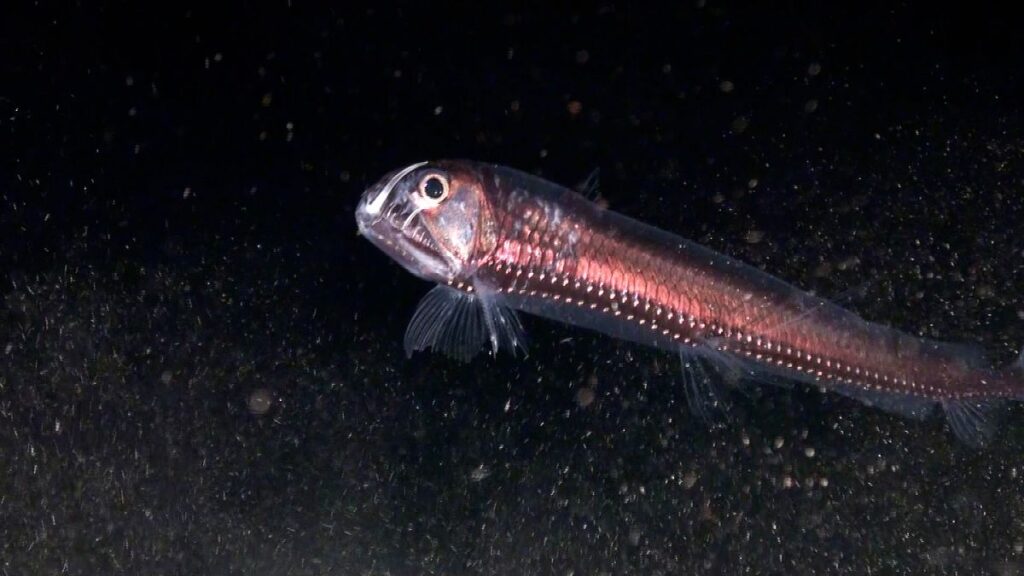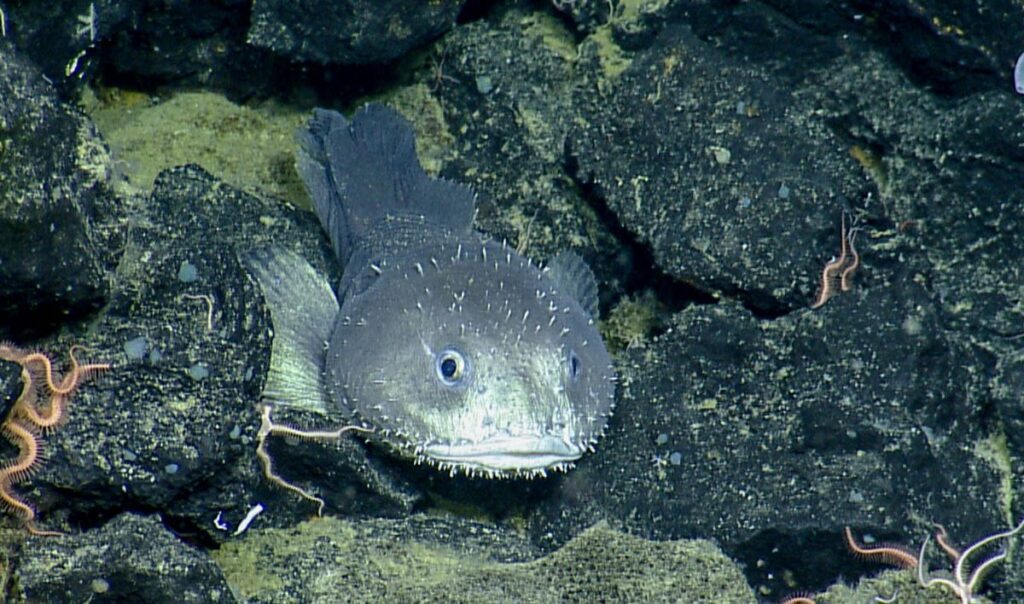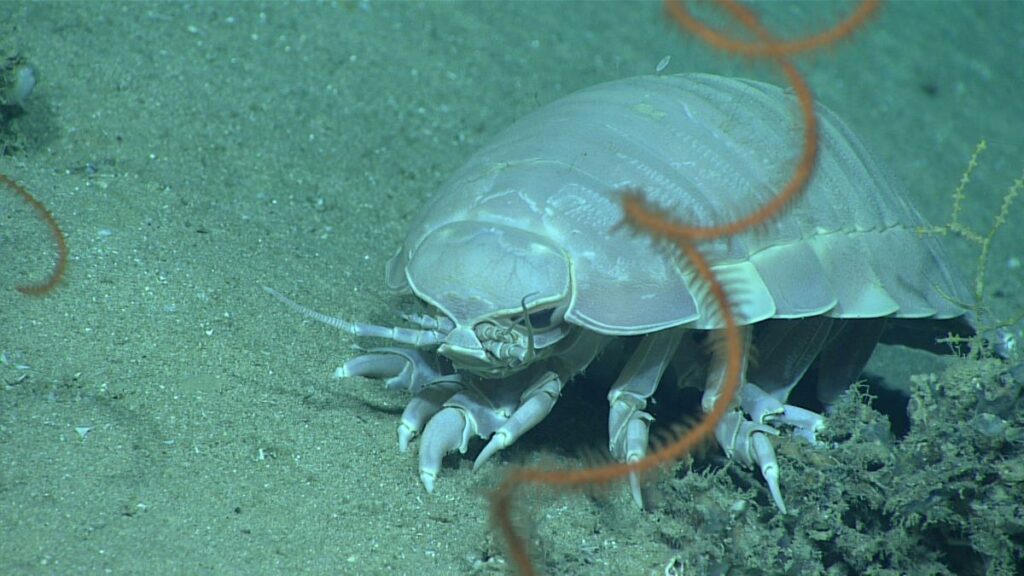October 31, 2024
Spooky Sea Creatures Found in Canada’s Deep Sea
Estimated reading time: 0 minutes
Forget haunted houses, scary movies, and ghost stories – Canada’s deep sea is home to real-life creatures that are equal parts creepy and fascinating! Here are five spooky sea creatures found lurking in the deep sea around the coasts of Canada.
pacific viperfish

This big-mouthed, toothy predator is the Pacific viperfish (Chauliodus macouni). With sleek silver scales and glowing bioluminescent spots along its body, the viperfish is perfectly suited for hunting in the depths of the ocean. Its most terrifying feature? Long, needle-like teeth that jut up from its bottom jaw and extend past its eyes! These sharp fangs form a “cage” in the mouth of the viperfish, trapping its prey and making escape nearly impossible – even for prey larger than the viperfish.
dinnerplate jellyfish
Unlike other jellies, dinnerplate jellyfish (Solmissus sp.) don’t just float along waiting for their next meal to come by. Rather, these stealthy predators swim forward with their tentacles stretched out like a web, ready to trap anything unlucky enough to cross their path. Their menu is equally eerie, preying on other jellyfish relatives, including comb jellies, siphonophores, and salps – no one is off-limits.
blob sculpin

Found in the pitch-black, icy depths of the North Pacific, the blob sculpin (Psychrolutes phrictus) calls the ocean floor home. These deep-sea fish can be found as deep as 2,800 metres, where sunlight never reaches. With food so hard to come by at these depths, blob sculpins are not picky. They will feast on tiny crabs, jelly-like creatures, and other shellfish found on the seafloor.
rattail fish
Another spooky deep-sea creature lurking in Canada’s depths is the rattail. These eerie fish – also known as grenadiers – have slender, ghostly bodies that narrow into a long, thin tail. Their large heads, gaping mouths, and huge eyes are definitely something to gawk at! Some rattail species, like Coryphaenoides acrolepis, can live up to 73 years. These fish are abundant in the deep sea and are considered apex predators, feeding on anything including smaller fish, squid and crustaceans.
giant isopod

The giant isopod, as its name suggest, is the largest – and one of the most mysterious – of the isopod crustaceans. These large, deep-sea creatures, which are related to terrestrial wood lice or pill bugs, can grow up to 40 centimeters long. That’s almost a foot and a half! Living over 500 metres below the sea surface, they thrive in total darkness, scavenging for fish heads, crab scraps, and “marine snow” – decaying plants, animals, and other organic matter that drifts to the seafloor.
You can learn more about all kinds of marine life found in the ocean around Canada by visiting our Marine Life Encyclopedia here >>

